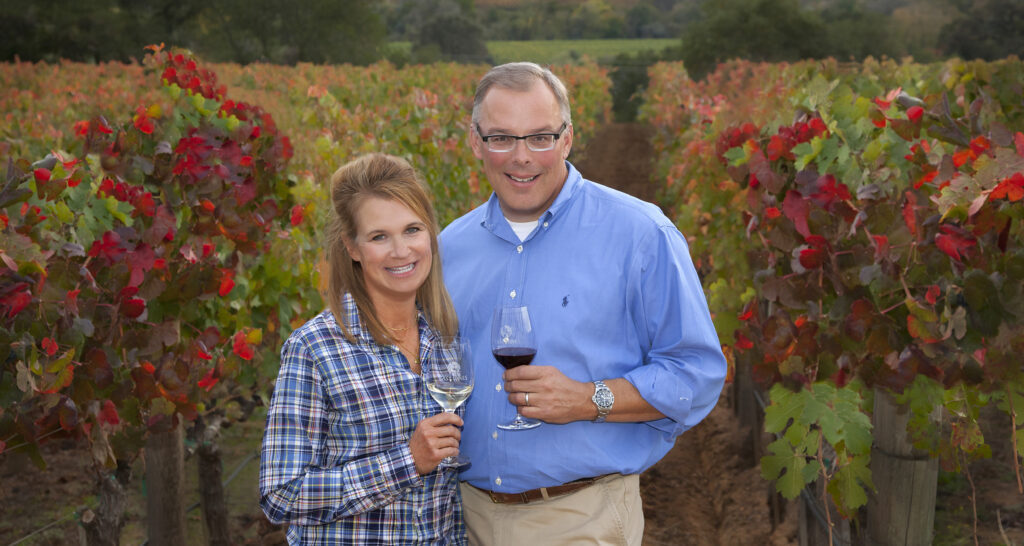Over the last 14 years, I’ve had the opportunity to tell the story of innovation within the wine industry, gaining insights into various approaches to winery beginnings. While family-owned wineries and those acquired by larger corporations or wealthy individuals are common paths, some wineries take the road less traveled. CAST Winery stands out as one such winery.
Jack Seifrick and his wife, Ann, chose an unconventional starting point. Their story unfolded through frequent trips to California’s wine country, shared with a close-knit group of friends from Dallas, nurturing their love for wine and growing their collection. With a thriving career in commercial real estate, Jack also founded and successfully sold two community banks. As their daughter went off to college, a perfect opportunity emerged for them to redirect their focus and start a new venture.
They took a fresh perspective on funding. Jack took a distributed ownership approach, where numerous stakeholders invested in the vineyard and became shareholders. It mirrored the community engagement seen in successful community banks. It secured the necessary capital but also fostered a sense of shared ownership and support within the community, ultimately contributing to the sustainable growth of the winery. The winery currently has 50 limited partners who helped buy the property, hire a consulting winemaker and team, and set up the business.
Based on their experiences in wine country, Jack and Ann were certain that Sonoma, and more specifically, the vicinity of Healdsburg, was the perfect place to start the winery. Jack told me that this location possessed the distinctive qualities of Burgundy, Bordeaux, and the Rhone Valley, making it a truly unique place where varied terroirs allow for the production of diverse wines. The accessibility of the Santa Rosa airport, coupled with the close-knit community and the presence of new hotels and restaurants, elevated Sonoma into more than just a location—it became a sought-after destination.
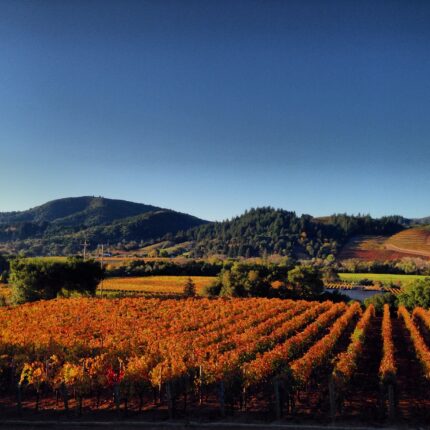
In 2011, they set out on a two-week exploration, renting a van in search of the ideal location to establish their new winery. Their journey led them to a site with the perfect ambiance—a place to savor a bottle of wine, watch the sunset, and overlook the beautiful Dry Creek Valley of Sonoma County. Enchanted by the surroundings, they decided to name their venture “CAST,” capturing the charm and allure of the location. According to Jack, “The name represented the CAST of people now involved in the winery – our investors, the team we built, and our amazing customers.”
The winery’s launch in 2014 coincided with the purchase of its original vineyard. The first year was spent on getting entitlement and an additional year was needed to secure permits. During this transitional period, the team opted for custom crush facilities, crafting wine for two years before the official winery opening. This strategic approach guaranteed wine would be available when the winery opened.
Jack shared narratives with me about the profound human connections that happen when people enjoy a great bottle of wine, especially when enjoyed at home without the enchantment of wine country. These connections often occur within the tight-knit community of family-based wineries. A poignant illustration unfolded when Allan Watson, proprietor of the neighboring 25-acre winery, reached out to Jack during his final days. In a heartfelt conversation, Allan asked Jack to carry on the legacy of the Watson vineyard, underscoring the enduring bonds within the wine community.
Among the 25 acres, six are exclusively dedicated to Zinfandel, a varietal that has been the backbone of CAST Wines’ Old Vine Zinfandel since 2012, featuring grapes from the 1970s. The winery is set to finalize the acquisition on Tuesday, expanding its Zinfandel portfolio from 15 to 41 acres—a significant growth made possible by the commitment of the 50 investors dedicated to the winery’s development.
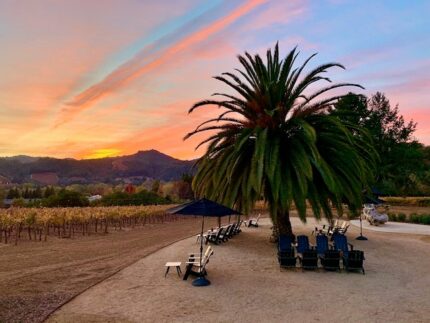
The winery makes Zinfandel and Petite Sirah sourced from their onsite vineyard, Grey Palm; Chardonnay and Pinot Noir from the Russian River Valley; and Cabernet Sauvignon from Alexander Valley. During the pandemic, they increased the varietals due to the number of grapes available from grape growers, but the winery won’t continue the production of so many wines going forward because there is no longer a supply overload. CAST Wines are sold direct to consumers and a few restaurants based on relationships.
The current winemaker is Ashley Herzberg. Jack told me that in 2019 when they were looking for their next winemaker, he talked to Bob Cabral, of Williams Selyem. Bob took the time to talk to him about the business, the philosophies and how to effectively build a team. The path to getting the best talent for CAST was to hire a young winemaker working on multiple projects that shared his philosophy. Ashley started as a lab technician and worked her way to winemaker over 15 years.
Sustainability Certification
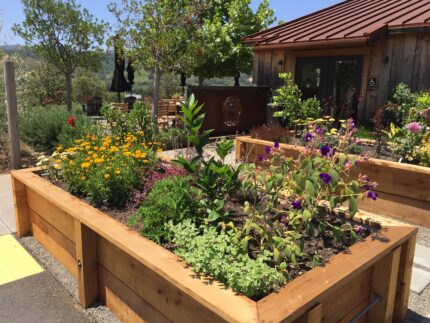
CAST is a member of the California Sustainable Winegrowing Alliance and the vineyards and winery have been Certified Sustainable since 2014.- With the addition of Watson Vineyards, this will continue to be the next focus. Jack talked about the commitment it takes but underscored the importance of doing the right thing for the earth.
The Future
We talked a lot about the future in terms of the winery and its investment model. So far, it’s been steady with current investors stepping up to fund things like the acquisition of the new vineyard. The model provides the 50 owners the ability to exit, but since its beginning, there has been a list of people interested in investing. Jack told me the biggest challenge is the core membership getting older and there was a need to find the next generation of investors in the future.
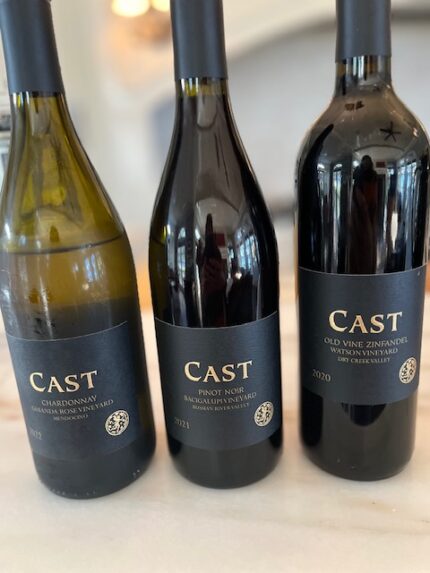
The Wines
2022 CAST Chardonnay Ghianda Rosé Vineyard – this biodynamically farmed wine is fermented in concrete eggs. It was a fresh Chardonnay with notes of apricot, almonds, pear, tropical and citrus. I loved the minerality.
2021 CAST Pinot Noir Bacigalupi Vineyards – When hired, Ashley was making wines from this esteemed vineyard. She immediately changed the vineyard blocks, and the Pinot Noir has flourished. I tasted lots of red fruit, violets, earth, and cassis. The goal was to let this wine express what Mother Nature gave to the vineyard with minimal intervention and from my perspective, it was a home run.
2020 CAST Old Wine Zinfandel Watson Vineyard – This was a structured and ready-to-drink Old Vine Zinfandel. I tasted blackberry, cherry, smoked meat, vanilla, and spice. Jack referred to it as a white tablecloth Zinfandel.
2018 Cast Petite Sirah Grey Palm Estate Vineyard – A very good Petite Sirah with notes of blackberry, black cherry, blueberry, licorice, smoked meat, herbs, menthol, chocolate, leather, and spice.
Jack told me meeting and connecting with people has been the most rewarding part of the wine journey. “It’s fun to be in a business where everyone is happy and willing to support us in a beautiful place. We get lots of referrals from visitors, showing that we’ve grown from scratch into a destination.” He told me that the memories we create with people in the vineyard are special. Coming from Dallas is a plus; it’s always a good sign when a “carload of Texans” arrives—they’re often travel enthusiasts willing to spend on their experience.”
In the wine industry, defying conventional paths with a fresh approach to community, sustainability, and the human connections woven into every bottle.
